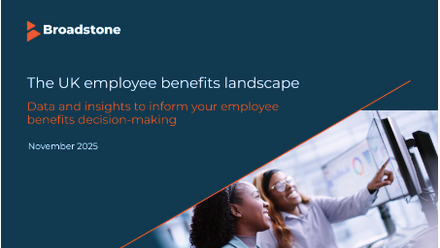Is pay still an effective incentive for employees?
Pay has traditionally been a primary motivator for employees, but HR professionals are increasingly debating its power and effectiveness.
The cost of living is high, and not all employers can afford to offer a pay increase that matches inflation. Your employee value proposition (EVP) has never mattered more, and it comprises elements beyond monthly pay.
Behaviours and incentives
The topic of employee incentives is broad, taking the debate to another level. For instance, employers must consider what behaviour they’re trying to incentivise employees to adopt.
Meeting targets, adopting values and staying with the business… these three behaviours alone are essential for companies to thrive, but the incentives for each will differ between businesses and employees.
Conscious quitting is on the rise, a sign that employees seek an organisation that aligns with their values, like businesses willing to offer more to support financial, mental and physical wellbeing.
Let’s explore further, starting with motivation.
1. Intrinsic vs. extrinsic motivation
When it comes to performance incentives, the trick is discovering what motivates your employees. There are two types:
- Extrinsic motivation (e.g., pay): financial rewards, bonuses, and other monetary benefits.
- Intrinsic motivation: job satisfaction, personal growth, and a sense of purpose. Research shows that intrinsic motivation can lead to higher engagement and satisfaction levels.
Pluxee UK’s article, Maslow, Herzberg, and Pink's Motivational Theories in the Workplace, explores employee motivation in more depth, particularly the power of intrinsic motivation.
2. Your employee value proposition
Your EVP has many elements, including:
- Work/life balance: flexible working hours, remote work options, and generous leave policies.
- Career development: pportunities for learning, training, and career advancement.
- Company culture: positive, inclusive, and supportive work environment.
- Recognition and appreciation: regular recognition of employee contributions beyond just financial rewards.
- Benefits and perks: health insurance, retirement plans, wellness programs, and other non-monetary benefits.
- CSR credentials: growing in importance, your corporate social responsibility credentials and social values form part of your overall culture.
3. Generational differences
When exploring what makes for an effective incentive, you must also consider generational differences.
- Millennials and Gen Z: these two generations often value meaningful work, flexibility, and work-life balance over high pay.
- Gen X and Baby Boomers: while still valuing attractive compensation, these groups might place more importance on job security and retirement benefits.
4. Impact on retention and engagement
Highly engaged employees are more productive and likely to stay with your business, reducing costly turnover.
How important is pay in these two areas?
- Retention: competitive pay is crucial for attracting talent, but retaining employees requires a combination of fair compensation and other factors, such as a positive work environment and growth opportunities.
- Engagement: employees are more engaged when they feel valued and part of a larger purpose, and it takes more than money to nurture high levels of engagement.
5. Employee benefits that save money
Employee discount schemes and cashback programmes help make employees’ lives more affordable, allowing them to stretch their salaries further cost-effectively.
Combined, they can offer employees more financial value than a pay rise.
- Salary sacrifice schemes: Cycle-to-work and green car schemes help employees adopt new, greener ways of travelling, supporting those necessary CSR credentials. They also save employees and employers money due to the tax and national insurance contributions (NIC) reductions.
Holistic approach
Pay remains a critical factor in attracting and retaining employees, but it’s most effective when part of a broader, more holistic approach to your employee value proposition.
Companies that recognise the importance of intrinsic motivators, career development, work-life balance, and positive company culture will likely see higher employee engagement and satisfaction.
This broader approach acknowledges that employees seek a well-rounded work experience where they feel valued not just for their output but as individuals with diverse needs and aspirations.
We live in a time where employees expect more from their employers.
Making life more affordable with a comprehensive employee benefits offering helps employees experience more of what matters most.
Supplied by REBA Associate Member, Pluxee UK
Pluxee UK, is a leading employee benefits and engagement partner that opens up a world of opportunities to help people enjoy more of what really matters in their lives.








